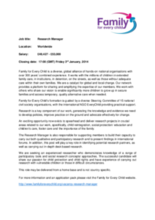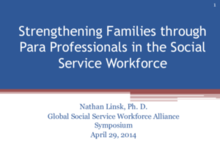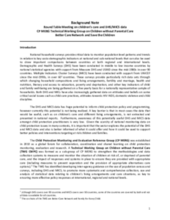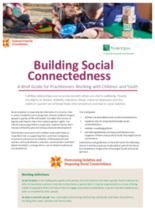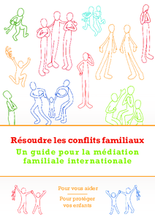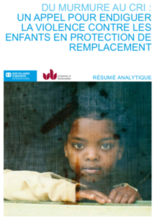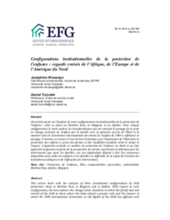Displaying 3461 - 3470 of 4273
Family For Every Child is seeking an experienced researcher who demonstrates knowledge of a range of participatory tools and social research concepts/approaches.
This is a PowerPoint presentation by Nathan Linsk from the April 2014 Symposium “Supporting Families, Building a Better Tomorrow for Children: The Role of the Social Service Workforce” hosted by the Global Social Service Workforce Alliance.
To develop the capacity of Red Cross Red Crescent psychosocial workers to adequately address the PSS needs in the Ebola outbreak, guidance materials and PowerPoint presentations are available here for download, along with a three-day programme to train trainers who are able to further disseminate the PSS knowledge and skills to frontline workers.
The aim of this initiative is to inform the development of an inter-agency technical brief that explains what household level data is available through DHS and MICS that is critical to better understanding and monitoring of trends and patterns in children’s living arrangements and care status, and how the data can and should be extracted and used to inform policy and programmes at country and international levels.
The purpose of this integrative chapter on well-being and the family is to present the analysis of a number of family-based factors that can influence child well-being.
This brief guide: defines social isolation and social connectedness; explains why it is important to build social connectedness; outlines enabling policies; provides guidelines on how practitioners can support children and youth to build meaningful social connections.
Ce guide s’adresse à toutes les familles à travers le monde et souligne que les intérêts des enfants sont au cœur des médiations familiales internationales. Il recommande la médiation familiale internationale comme un moyen simple, pragmatique et professionnel qui, tout en garantissant le respect des droits individuels, peut contribuer à résoudre les conflits parallèlement aux procédures juridiques ou judiciaires.
Ce rapport repose sur les données d’une étude documentaire exhaustive réalisée à l’échelle mondiale, ainsi que sur les évaluations de la mise en œuvre des Lignes directrices dans 21 pays à travers le monde. Le rapport formule des revendications particulières relatives à la forte vulnérabilité et à la violence auxquelles sont confrontés les enfants sous protection de remplacement.
Cet article porte sur l’analyse de trois configurations institutionnelles de la protection de l’enfance : celle en place au Burkina Faso, en Belgique et au Québec. Pour chaque configuration, le texte explore les transformations qui ont marqué le passage de la prise en charge exclusive de l’enfant par la famille vers la présence accrue de l’État et la manière dont la Convention internationale des droits de l’enfant de 1989 a influencé ce passage.
Cette video est une introduction aux Standards minimum pour la protection de l'enfance dans l'intervention humanitaire qui ont ete developpes pour soutenir les activites en matiere de protection de l'enfance dans les situation d'urgence.

